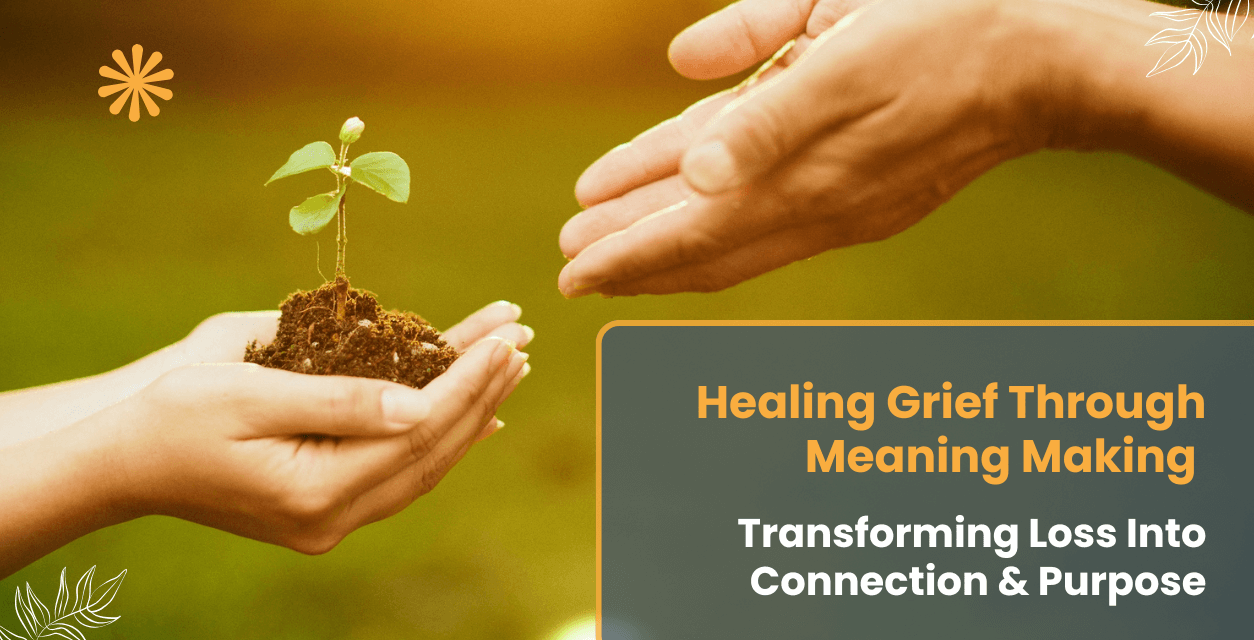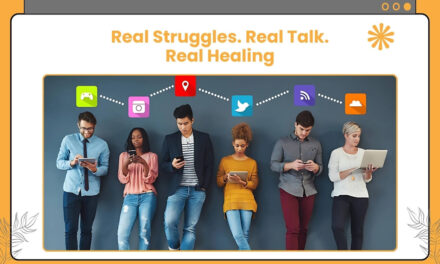You may find yourself asking, “When will I be over this?” as you carry grief through days, weeks, and months. But grief is not a straight line. It is full of unexpected detours, pauses, and emotional circles you did not see coming.
Healing from grief comes less through forgetting and more through making sense of loss. By finding meaning after loss, many discover that grief can become a path toward connection, purpose, and personal insight.
What Is Grief and Why Does It Hurt So Deeply?
Grief is the natural emotional response to loss, particularly the loss of someone or something we hold dear. It is not a sign of weakness or something to “get over,” but rather a reflection of the love and connection we felt.
When that connection is broken, it creates a wound that cuts into every part of our emotional, mental, and even physical experience.
Grief does not follow one path. It can feel like sadness, anger, guilt, confusion, or even numbness. These emotions often fluctuate and return in unexpected waves.
Everyone grieves differently, depending on their personality, the nature of the relationship, the circumstances of the loss, and their life history.
The Role of Attachment
One reason healing from grief can be so difficult is that it stems from attachment. We form emotional bonds with others, which help us feel safe, loved, and connected to our world. When someone important is no longer present, our nervous system reacts to that absence as a threat or disruption.
This creates a sense of inner disorientation, as if part of us is missing or incomplete. Grief is our psyche trying to reorient to life without that bond.
Grief and Mourning in Everyday Life
Grief and mourning are not limited to death alone. People may grieve after divorce, job loss, miscarriage, or a serious health diagnosis. Mourning is the outward expression of grief, such as what we show in rituals, conversations, or the act of remembering. Even when unspoken, mourning shapes how we process grief internally.
In a culture that often encourages people to “move on,” it is important to remember that grief is not something to solve. It is something to carry, and over time, it transforms. The pain signals how meaningful the relationship or loss was, and that meaning is where healing begins.
- Learn more about Grief and mourning
The Myth of “Getting Over” Grief
There is no set date or milestone when grief ends. The common question, “When will I be over this?” often sets unrealistic expectations. People assume they should feel “normal” after a certain time. In truth, grief lives with us, shifting shape as life unfolds.
Healing from grief is less about erasing pain and more about weaving it into a larger story. Though the sharp ache may soften, recent and past losses can still cause waves. The goal is not to be ungrieved but to live fully despite grief’s presence.
What Is Meaning Making in Grief?
After a profound loss, people often ask: What do I do with this pain? What now? These questions reflect an instinctive need to make sense of what happened. That process is called meaning-making in grief, and it is a central part of recovery.
Rather than ignoring or minimizing loss, meaning-making invites us to reshape it into something we can carry forward, through memories, actions, or personal growth.
Meaning-making is not about finding silver linings. Instead, it goes above and beyond and includes honoring your experience and allowing new understandings to emerge. This might look like turning grief into advocacy, creating new rituals of remembrance, or adjusting one’s identity in light of what was lost. It is not quick or simple, but it can be profoundly healing.
Viktor Frankl’s Concept of Meaning
Viktor Frankl, a Holocaust survivor and psychiatrist, introduced the idea that humans can endure great suffering if they find meaning in it. His approach, called Logotherapy, teaches that meaning is not found; rather, it is made.
Even in the face of deep pain, people can discover values, insights, and strength they never knew they had.
This philosophy has deeply influenced therapy for grief and loss. A therapist might ask, “What does this loss say about what matters most to you?” or “How has your understanding of life changed since then?”
By exploring these questions, clients begin to find threads of purpose woven through their grief, sometimes slowly, sometimes unexpectedly. For some, the meaning may be as simple as living more intentionally. For others, it might be starting a project or cause in memory of the person they lost.
Personal Transformation through Loss
Loss can break you open, and that opening can become a space for change. Personal transformation through grief is not about leaving pain behind, but about using it to evolve. Many people who engage in grief therapy find that their values shift.
They may become more empathetic, more focused on what really matters, or more motivated to live in alignment with their beliefs.
An example: one man, after losing his partner, began volunteering at a local hospice. At first, it helped him feel close to what he lost. Later, it gave him a renewed sense of purpose.
His story reflects a common truth, which is that personal growth through grief is not always dramatic, but it is often real. Through reflection, community, and intentional support, individuals reshape not only how they live with grief but how they live altogether.
Stages of Grief and Moving Forward
The concept of grief unfolding in stages became popular through the work of Elisabeth Kübler-Ross, who introduced five stages: denial, anger, bargaining, depression, and acceptance.
While this model is helpful in understanding that grief has many emotional layers, it is important to remember that these stages are not linear. People may experience them out of order, repeat some, skip others entirely, or feel several at once.
Grief is more like a wave than a straight path. One day may bring a sense of peace; the next, a powerful surge of sadness or anger. These emotional shifts are not setbacks, but are natural parts of coping with grief and integrating the experience of loss.
Moving forward is not about “completing” the stages but about growing through them. Each phase invites reflection and healing. Acceptance, for example, does not mean forgetting. Instead, it signals the beginning of emotional healing after loss, where you start to live again while honoring what was lost.
With time, care, and intention, grief becomes something you live with, not something that defines you.
Grief in Therapy: A Path to Healing
Grief therapy provides comfort and tools to navigate one of life’s most difficult journeys. Whether someone is facing fresh loss or unresolved pain from the past, working with a trained therapist can help them process emotions, regain balance, and begin to heal with intention.
Approaches like narrative therapy, cognitive techniques, and acceptance and commitment therapy can help individuals learn and understand their reactions and create space for growth. The therapy process also helps normalize intense emotions and gives language to grief that might otherwise remain unspoken.
Research supported by the National Institute of Mental Health (NIMH) has shown that targeted grief therapies, especially those focused on meaning and memory, significantly improve emotional well-being and reduce symptoms of prolonged grief.
These findings reinforce what many therapists already witness: grief can become a pathway to deep transformation when guided with care and intention.
When to Seek Professional Support?
Professional guidance is helpful when grief disrupts daily life or drags on beyond a year. If emotional healing after loss is stalled, or if feelings intensify rather than ease, it may be time to reach out.
Situations where grief therapy is helpful include the following.
- Persistent inability to function at work or in relationships.
- Overwhelming guilt, shame, or avoidance.
- Thoughts of self-harm or wanting to end life.
Final Thoughts: Embracing the New Normal
Healing from grief is not about returning to who you were before. It is about expanding who you can become. Grief invites us to ask deeper questions: What matters most? What do I value? How will I carry what is gone with me without it weighing me down?
Most importantly, healing from grief is a journey without a fixed end. But through meaning making, connection, and support, a new form of living becomes possible, one where sorrow and hope co-exist, and identity is richer for having loved deeply.
If you are navigating grief, our therapists can help you explore your own meaning-making journey. Interested in joining a group therapy session?
Contact us today to get started.





